I think it is a good idea for people to understand the various parts of the stock system, what each does and the consequences of changing parts. The following pictures are of my 1999 LS400 exhaust parts. They are essentially identical for 1995-2000 cars and very similar to both the 1990-1994 LS400 and all year USA spec SC400s.
Bolted to the exhaust manifolds are the catalytic converters. These flow pretty darn well due to the structure of the core. Here is a pic of a converter and looking through the high flow core.
The core is made up of a thin metal spiral that has corrugated dividers. The end result is a part that is very similar to a large number of small drinking straws all aligned. This allows the gasses to flow directly through the core with minimal restriction. Here is a picture looking through the core. Notice the light that can be seen THROUGH the core.
The entire core has this structure and as you move the converter against the light source you can see through the entire core:
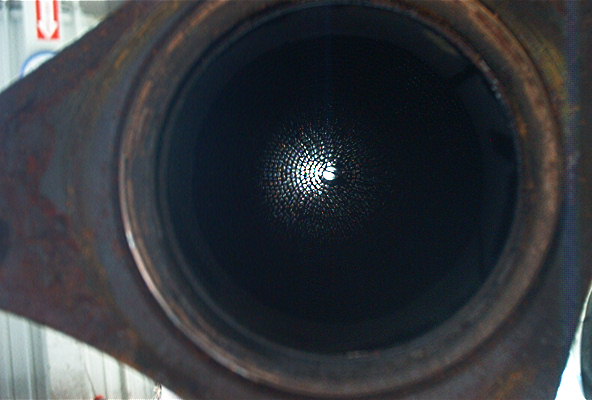
Here is a stock 1998 to 2000 LS400 and GS400. Other models are similar. This picture is looking at the manifold end has a 60mm inlet ID and a 3 bolt flange where the outlet end has a 2 bolt flange and a 50mm outlet ID.
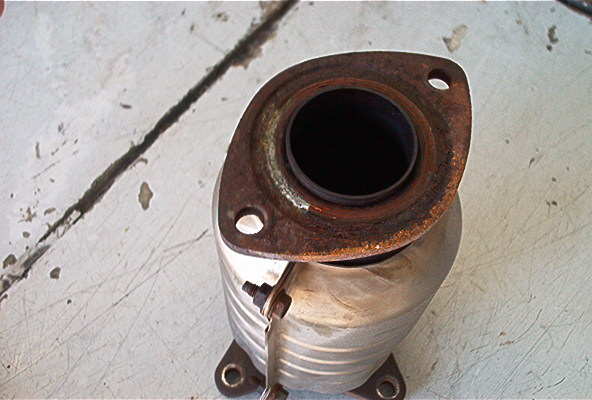
Cat to Y pipe intersection showing after cat O2 sensor location. This qualifies as one of the STRANGEST stock exhaust parts I have seen. For some reason Toyota/Lexus decided to weld a straight section of 60mm pipe to the cat outlet flange, angle cut it, weld a 50mm pipe pipe that has its last couple of inches expanded to 60mm and match angle cut. This intersection SCREAMS turbulence. Very odd. Also note the O2 placement is in the 50mm sections of the Y pipe where the sensor tip takes up a good portion of the available flow area.
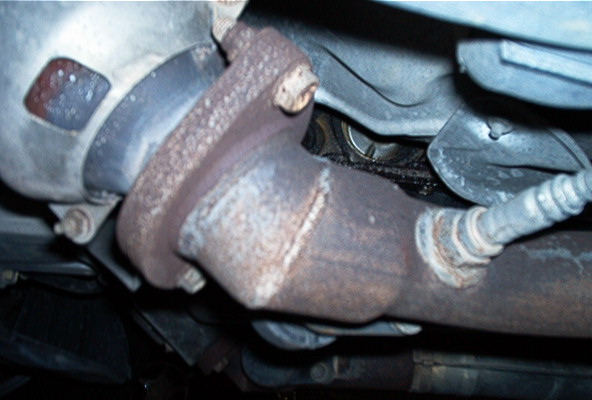
Here is the Y pipe. The factory covers most of it with heat shielding. Each of the twin pipes are 50mm and the junction is 60mm but it quickly necks down to 50mm as it enters the center resonator. The resonator is a straight through 50mm perforated tube and some high frequency sound is absorbed. But, at only 50mm the restriction is substantial.
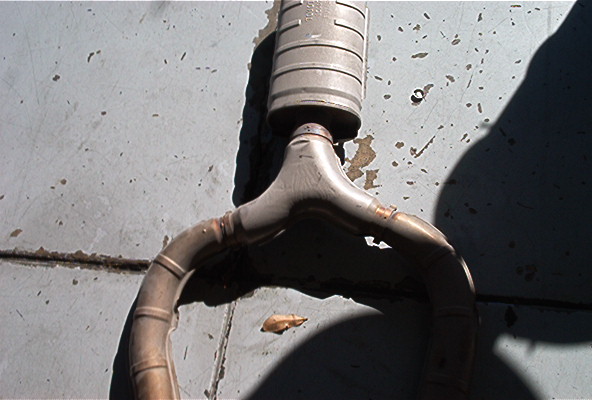
Close up showing the reduction from 60mm (2.36″) to 50mm (1.97″) going from the junction of the stock LS400 Y pipe to the center resonator… VERY SMALL FOR APX 300hp
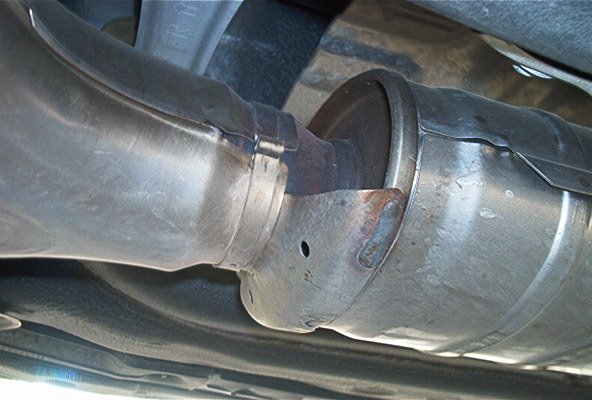
Pipe from center resonator expands from 50mm back to 60mm
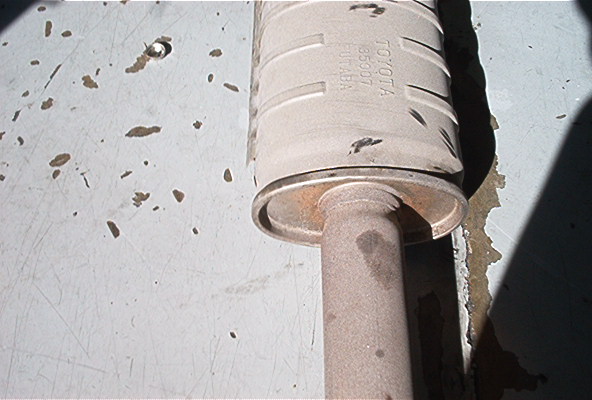
The single 60mm is split into twin 50mm pipes to the twin silencers. These look like standard mufflers with a VERY unusual side entry rear exit configuration. Notice the heat discoloration at the intersection where the split occurs.
Heat discoloration shows up where there is a flow restriction. Notice also the heat discoloration just after the pipes enter the silencers. This indicates the silencers are a large restriction to flow. It is AMAZING the engine makes the power it does through this congestion.
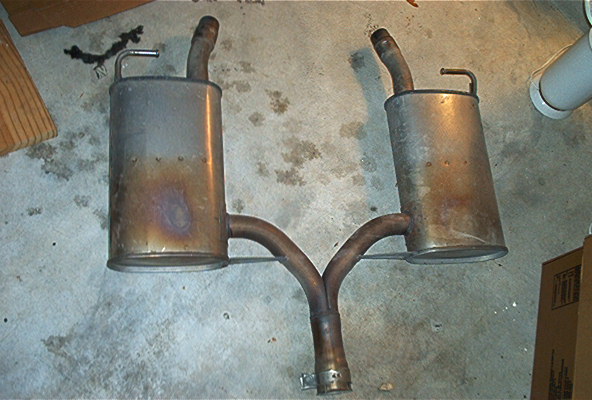
Close up of the way the pipes split to the silencers. Each “receiving” 50mm pipe is crushed in half, squeezed next to the other and welded to the 60mm “feed” pipe. This is a VERY restrictive intersection.
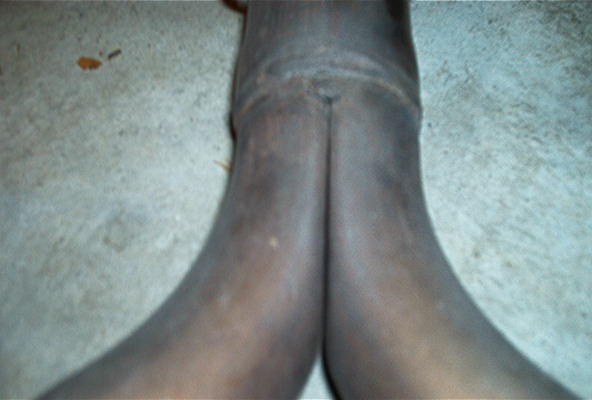
Kind of hard to see but if you look closely you may make out the sharp edges and half moon shape of the 50mm pipes inside this 60mm section. This is looking in the direction of flow from the center single 60mm pipe as it splits into the silencers. Again, this looks like a good one way anti-reversion section… unfortunately in the WRONG direction
It is also a good assumption that this same construction is used under the heat shield on the Y pipe seen above. In that location it is not as bad as this but still is a marginal intersection.
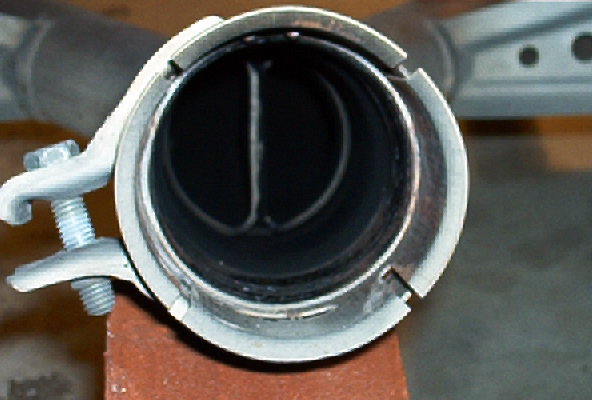
And, finally… below are some related videos of different LS400 exhaust setups you might enjoy.